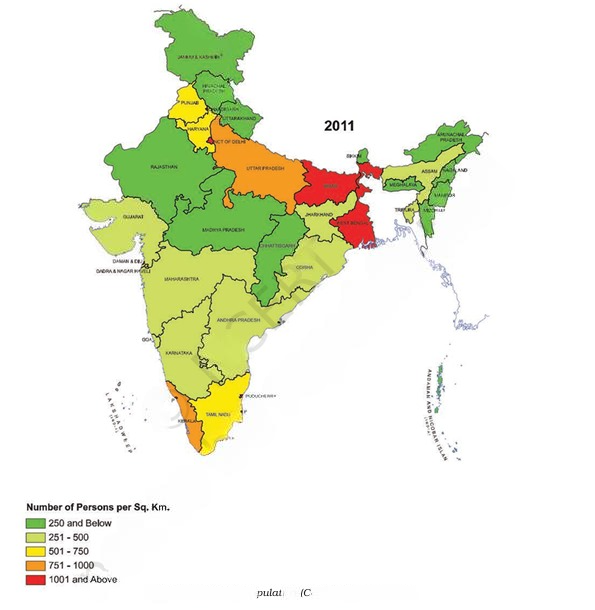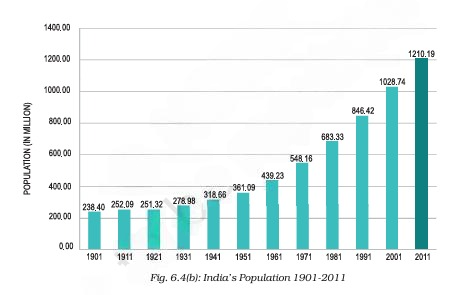Population- Complete Guide For Class 9 Geography Chapter 6
Welcome to iPrep, your Learning Super App. Our learning resources for the chapter, “Population” in Geography for Class 9th are designed to ensure that you grasp this concept with clarity and perfection. Whether you’re studying for an upcoming exam or strengthening your concepts, our engaging animated videos, practice questions and notes offer you the best of integrated learning with interesting explanations and examples.
Understanding the dynamics of a nation’s population is key to comprehending its social, economic, and environmental challenges. In CBSE Class 9th Geography Chapter “Population,” we explore how India’s vast and diverse population shapes the country’s future. From the size and distribution of the population to the critical role of adolescents, this chapter gives a clear picture of the factors that contribute to population growth and change. Whether you’re preparing for exams or simply seeking to strengthen your knowledge, this chapter lays the foundation for understanding one of the most important aspects of India’s development.
Population
The chapter “Population” from the Class 9 Geography textbook delves into the dynamics of India’s population. It covers the size, distribution, and density of the population across the country, exploring the factors that contribute to population growth and change. The chapter also highlights the importance of the adolescent population and discusses India’s National Population Policy.
Population is a critical aspect of a country’s socio-economic framework. The chapter on “Population” provides an in-depth look at how India’s vast and diverse population is distributed, how it grows, and the factors that contribute to this growth. The chapter also touches upon the importance of the adolescent population and the measures taken by the government through the National Population Policy to manage and guide population growth.
Objectives Of Learning The Chapter
Now that we know the importance of studying this chapter, let’s understand the objectives behind studying “Population”.
- Understand the size and distribution of India’s population.
- Explore the factors influencing population growth in India.
- Analyze the processes involved in population change.
- Learn about the adolescent population and its significance.
- Understand India’s National Population Policy.
Let’s now delve into the various sections of the chapter in detail.
In the first place, to understand the scale and spread of India’s population, let’s explore the section ‘Population Size and Distribution’ of the chapter ‘Population’.
Population Size and Distribution
This section covers some important sub-sections. Let’s now undertake these.
India’s Population Size and Distribution by Numbers:
- India is the second most populous country in the world, only behind China.
- The population is unevenly distributed across the states, with some states being densely populated while others have a sparse population.

India’s Population Distribution by Density
- Population density refers to the number of people living per unit area of land.
- The chapter discusses regions with high and low population densities and the factors influencing these variations, such as physical features, climate, and economic opportunities.

Now, to understand how the population changes over time, let’s explore the section ‘Population Growth and Processes of Population Change’ of the chapter ‘Population’.
Population Growth and Processes of Population Change
This section includes several key sub-sections. Let’s now explore them in detail.
Population Growth
- Population growth refers to the increase in the number of people over a specific period.
- The chapter examines factors contributing to population growth, including birth rates, death rates, and migration patterns.

Processes of Population Change/Growth
- The processes that affect population growth include natural increase (births minus deaths) and migration (both internal and external).
- The chapter details how these processes impact the overall population and its distribution.

Adolescent Population
- Adolescents make up a significant portion of India’s population.
- The chapter discusses the importance of this group, as they represent the future workforce and the potential for economic growth and development.
National Population Policy
- India’s National Population Policy aims to stabilize the population while improving health and welfare.
- The policy emphasizes family planning, maternal and child health, and education, particularly for the adolescent population.
Now that we have gained complete knowledge about the chapter “Population” let us know the overall learning value of the lesson.
Overall Learning Value of the Chapter
The chapter on Population provides a comprehensive understanding of India’s demographic structure, including population size, distribution, and growth trends. It highlights the significance of population policies and demographic processes, offering insights into how these factors influence the nation’s development, resource management, and future planning.
In conclusion, CBSE Class 9th Geography Chapter “Population” offers a thorough understanding of India’s demographic dynamics. By exploring the size, distribution, and density of the population, students gain valuable insights into the factors driving population growth and change. The chapter “Population” also highlights the importance of the adolescent group and the National Population Policy, underscoring how government initiatives are designed to manage population growth effectively.
With iPrep’s comprehensive learning resources, including engaging animated videos, detailed notes, and practice questions, mastering the key concepts of the chapter “Population” becomes easier and more enjoyable. Let iPrep be your guide in acing this vital chapter and enhancing your understanding of India’s population.
Practice questions on Chapter 6 - Population
Get your free Chapter 6 - Population practice quiz of 20+ questions & detailed solutions
Practice Now








